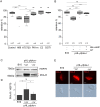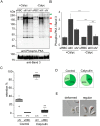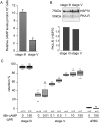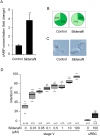cAMP-Signalling Regulates Gametocyte-Infected Erythrocyte Deformability Required for Malaria Parasite Transmission
- PMID: 25951195
- PMCID: PMC4423841
- DOI: 10.1371/journal.ppat.1004815
cAMP-Signalling Regulates Gametocyte-Infected Erythrocyte Deformability Required for Malaria Parasite Transmission
Abstract
Blocking Plasmodium falciparum transmission to mosquitoes has been designated a strategic objective in the global agenda of malaria elimination. Transmission is ensured by gametocyte-infected erythrocytes (GIE) that sequester in the bone marrow and at maturation are released into peripheral blood from where they are taken up during a mosquito blood meal. Release into the blood circulation is accompanied by an increase in GIE deformability that allows them to pass through the spleen. Here, we used a microsphere matrix to mimic splenic filtration and investigated the role of cAMP-signalling in regulating GIE deformability. We demonstrated that mature GIE deformability is dependent on reduced cAMP-signalling and on increased phosphodiesterase expression in stage V gametocytes, and that parasite cAMP-dependent kinase activity contributes to the stiffness of immature gametocytes. Importantly, pharmacological agents that raise cAMP levels in transmissible stage V gametocytes render them less deformable and hence less likely to circulate through the spleen. Therefore, phosphodiesterase inhibitors that raise cAMP levels in P. falciparum infected erythrocytes, such as sildenafil, represent new candidate drugs to block transmission of malaria parasites.
Conflict of interest statement
The authors have declared that no competing interests exist.
Figures






References
-
- Hawking F, Wilson ME, Gammage K (1971) Evidence for cyclic development and short-lived maturity in the gametocytes of Plasmodium falciparum . Trans R Soc Trop Med Hyg 65: 549–559. - PubMed
-
- Smalley ME, Abdalla S, Brown J (1981) The distribution of Plasmodium falciparum in the peripheral blood and bone marrow of Gambian children. Trans R Soc Trop Med Hyg 75: 103–105. - PubMed
Publication types
MeSH terms
Substances
Grants and funding
LinkOut - more resources
Full Text Sources
Other Literature Sources

